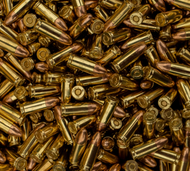Does Ammo Go Bad?
May 17th 2023
The reliability of ammunition is vital for maintaining firearm performance and ensuring personal safety. However, ammunition, like any other product, can degrade over time. This article explores the concept of ammunition going bad, providing insights into identifying potential issues, understanding shelf life, and strategies to make ammunition last longer.
How do you know if ammo is bad?
To determine if ammunition has gone bad, it is important to conduct a visual inspection, listen for abnormalities, and even rely on your sense of smell. Visual inspection involves checking for signs of corrosion, discoloration, or any visible damage to the cartridge. Additionally, examining the primer and bullet integrity is crucial to ensure there are no visible defects or deformities. Listening for rattling sounds or detecting loose components when shaking the cartridge can also indicate potential issues. Unusual odors, such as a strong smell of gunpowder or chemical-like scents, can also be a red flag. When in doubt, seeking the advice of ammunition experts can provide further clarification.
What is the shelf life for bullets?
The shelf life of ammunition is influenced by several factors, including environmental conditions, storage practices, and the quality of manufacturing materials. Temperature and humidity are critical elements that can accelerate ammunition degradation. Proper storage practices, such as using appropriate containers that protect against moisture, can significantly extend shelf life. The type of ammunition, whether centerfire or rimfire, as well as the quality of propellants and primers used, also play a role in determining shelf life. While some manufacturers provide estimates for ammunition shelf life, it is important to understand that these are general guidelines, and individual conditions may vary.
How to make ammo last longer?
To maximize the lifespan of ammunition, it is crucial to implement proper storage and usage practices. Storing ammunition in suitable containers, such as ammo cans or sealed bags, can protect it from environmental elements. Maintaining stable temperature and humidity levels is essential, as extreme conditions can accelerate degradation. Regularly rotating ammunition and practicing the "first in, first out" (FIFO) principle ensures that older ammunition is used first, reducing the chances of degradation. Additionally, avoiding exposure to extreme temperatures, direct sunlight, excessive moisture, and chemicals or solvents can help preserve ammunition quality.
Can you shoot ammo that is 10 years old?
The age of ammunition is a common concern among firearm owners. The good news is that, in most cases, ammunition that is 10 years old or even older can still be safely shot. Ammunition, if stored properly, can remain functional and reliable for many years. However, it is essential to perform a thorough inspection of older ammunition before use. Pay attention to signs of corrosion, discoloration, or visible damage to the cartridge. Check the primer and bullet integrity, ensuring there are no deformities or defects. If the ammunition passes visual inspection and there are no apparent issues, it is generally safe to shoot. It's worth noting that ammunition stored in unfavorable conditions or exposed to moisture may degrade faster and might require more scrutiny before use.
Does ammo go bad if it has gotten wet?
The impact of moisture on ammunition largely depends on the extent and duration of exposure. While some ammunition can withstand brief exposure to moisture without significant damage, prolonged exposure or immersion in water can lead to serious degradation. Water can seep into the cartridge and affect the gunpowder and primer, potentially causing misfires or erratic performance. Moisture can also cause corrosion, which compromises the integrity of the cartridge and reduces reliability.
If ammunition has gotten wet, it is essential to take appropriate precautions. Remove the ammunition from its packaging and thoroughly dry it. Inspect each cartridge for signs of corrosion, discoloration, or other visible damage. Pay close attention to the primer, as any indication of corrosion or damage may render the round unsafe to shoot. When in doubt, it is always best to err on the side of caution and consult with ammunition experts or consider replacing the wet ammunition.
Conclusion
Understanding the concept of ammunition going bad is essential for firearm owners and enthusiasts. By inspecting ammunition for signs of degradation, understanding shelf life factors, and implementing proper storage and usage practices, individuals can ensure the reliability and longevity of their ammunition. Regularly inspecting ammunition, following manufacturer recommendations, and seeking guidance from experts contribute to a safer and more effective shooting experience. Remember, responsible ammunition management is an integral part of firearm ownership and safety.

